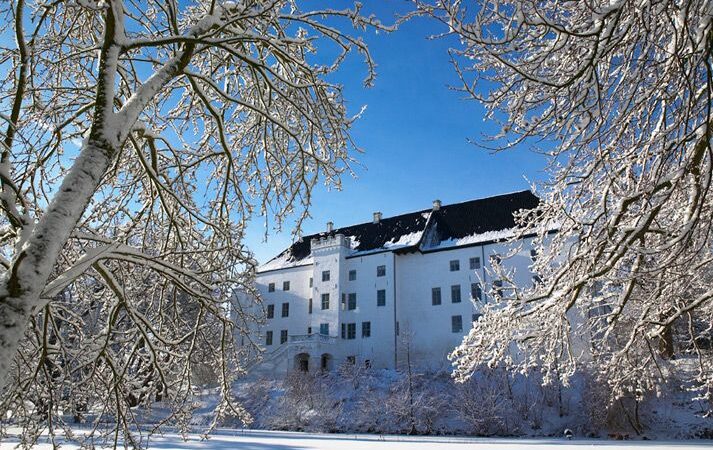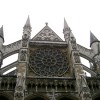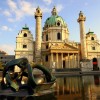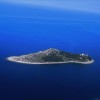In part one of this series we showed you how castles came into being, and their evolution from wooden structures to stone, plus the motivation regarding their constant change in shape. We explained how the location was chosen and how a castle could be conquered with less effort and more inventiveness.
In part two we decided to focus on another aspect that makes a castle more appealing for visitors. Apart from its looks, the mystery that surrounds a castle is a good incentive.
Here’s a list of Europe’s most haunted castles:
Dragsholm Castle – Denmark
Dragsholm Castle was built around 1215 by Peder Sunesen, the Bishop of Roskilde, and during the Middle Ages, the building was modified from the original palace to a fortified castle. Between 1534 and 1536 there was a war between those who supported the Catholic King Christian II and those who were on the side of Christian III. The latter eventually won, and after the Protestant Reformation, from 1536 til 1664, Dragsholm Castle was used as a prison for noble and ecclesiastical prisoners. Some of its most well-known prisoners are Joachim Rønnow (the last catholic Bishop in Roskilde and the former owner of the castle) and the 4th husband of Mary Stewart, the Scottish Earl of Bothwell.
The Earl of Bothwell died after years of rough imprisonment in the cellars of the Dragsholm Castle and his ghost is said to haunt the courtyard in a carriage. Most of the time visitors report hearing the sound of horses. He is not the only ghost at Dragsholm Castle. The castle allegedly has over a hundred ghosts. There’s the Grey Lady, a former servant, who wanders around at night time. Then there’s the White Lady, the daughter of a former owner, who fell in love with a low class boy and became pregnant. She was imprisoned in the dungeons by her own father. Her legend is supported by some facts. During the early twentieth century, workers who were tearing down walls for a renovation discovered a small skeleton wearing a white gown.
Leap Castle – Ireland
Like many castles, Leap has a bloody history. In 1532, a fierce rivalry for the leadership turned brother against brother, one of which was a priest. The priest was killed by his brother while holding a sermon in what is known now as the Bloody Chapel. A hidden dungeon was found in this chapel, and around 1900 workmen who where hired to clean it out made a gruesome discovery: so many human skeletons laid piled on top of each other that it took three full cart loads to remove all of the bones.
As many people were imprisoned and executed in the castle, it is supposedly haunted by several specters. The most terrifying is a small, grey humanoid with a decaying face with black holes instead of eyes. This evil spirit is known to attack when provoked. The ghost of the murdered priest is seen around the chapel. In total, up to 20 spirits are known to roam this most haunted 14th century Irish castle.
Bruce Castle – England
Bruce Castle is named after the House of Bruce who formerly owned the land on which it is built. Clan Bruce was a Royal House in the 14th century, producing two kings of Scotland. The current house is one of the oldest surviving English brick houses. It was remodelled in the 17th, 18th and 19th centuries. Since 1892 the grounds have been a public park (Tottenham’s oldest public park) and since 1906 Bruce Castle has been a museum and now houses the Borough of Haringey’s local history collections, archives and art exhibitions.
Constantia Lucy (daughter of Sir Richard Lucy 1st Baronet of Broxbourne and Elizabeth Cock) married Henry Hare, 2nd Baron Coleraine, sometime before before 1667. One year later they had a son called Hugh. Henry confined his wife to the upper rooms in the clock tower, while having an affair with Sarah Seymour, Duchess of Somerset. On November 3rd,1680 Constantia managed to escape with her infant son and jumped off the balcony. People say her suicide is replayed on the anniversary of her death. Constantia Hare is now known as The Ghostly Lady of Bruce Castle. However, a ghostly party has been witnessed on several occasions during the past twenty years. Witnesses describe it as “a group of people in eighteenth century costumes that just vanish into the walls when approached.”
Edinburgh Castle – Scotland
The Edinburgh Castle is thought to date back to around 600 AD and holds the reputation of Scotland’s most haunted location. Under the castle’s foundation there are several tunnels. When they were first discovered a lonely piper was sent down to investigate. The man took his pipes and kept playing as he went along, for the people above to hear his whereabouts. Sadly, the playing suddenly stopped. The rescue party sent to retrieve the piper reported he had simply vanished.

On occasions the Lone Piper can be heard playing in the tunnels. He is not the only ghost haunting the castle. There are sightings of a ghost dog, wandering in the castle’s cemetery, of a headless drummer, and sightings of many spirits of prisoners. Over the centuries the dungeons of the castle have been used for imprisonment and torture. It is believed that the souls of the tortured inmates keep coming back to haunt the castle.
Ballygally Castle – Northern Ireland
Ballygally Castle is located in the village of Ballygally, overlooking the sea at the head of Ballygally Bay. The castle is the only 17th century building still used as a residence in Northern Ireland, and is reputed to be one of the most haunted places in the province.
Built in 1625 by James Shaw and true to most castles in Europe, Ballygally Castle is, of course, haunted. There is the ghost of Lady Isobel Shaw, who was locked in a room by her husband James and starved to death. Like The Ghostly Lady of Bruce Castle, she too leaped to her death. She is however a friendly ghost. She amuses herself by knocking on doors and then disappearing. Another female ghost is that of Madame Nixon who’s walking around in a silk dress. Restless souls of soldiers can be seen on castle’s grounds wearing their uniform and trying to engage the visitors in a fair battle.
Make sure you don’t miss part three, where we take you to England’s most notorious (and most haunted) castles.
More in this series:
- World’s Most Famous Medieval Castles — Europe (I)
- World’s Most Famous Medieval Castles — Europe (III)


 By
By 








